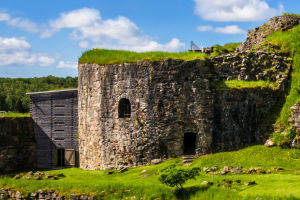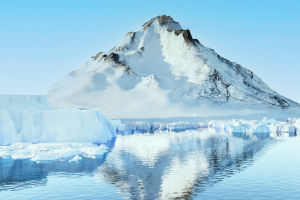Located on the northernmost tip of Kauai, Hawaii, the Kilauea Lighthouse is a must-visit for Lykkers seeking both scenic beauty and historical significance.
Perched on a dramatic cliff overlooking the Pacific Ocean, this iconic landmark offers a perfect combination of breathtaking views, wildlife encounters, and a glimpse into Hawaii's maritime history.
Whether visiting for photography, sightseeing, or a peaceful walk along the coastline, Kilauea Lighthouse provides an unforgettable experience.
Entry and Access Information
The Kilauea Lighthouse is part of the Kilauea Point National Wildlife Refuge, a protected area that also serves as a sanctuary for seabirds and other wildlife. The refuge and lighthouse are open to the public from Tuesday through Saturday, from 10 AM to 4 PM. Visitors should note that the lighthouse and the refuge are closed on Sundays, Mondays, and federal holidays.
An entry fee of $10 per person is required to access the refuge and lighthouse. Children under 16 years old can enter for free. The funds collected contribute to the preservation and conservation efforts in the area, ensuring that future generations can enjoy the pristine environment.
The easiest way to reach the Kilauea Lighthouse is by car. It is located about a 15-minute drive from the town of Kilauea and approximately 30 minutes from the popular resort area of Princeville. Parking is available near the entrance to the wildlife refuge, and the fee is included in the general admission.
What to Expect During Your Visit
As visitors arrive at the Kilauea Lighthouse, they are immediately struck by the panoramic views of the Pacific Ocean. The lighthouse, originally built in 1913, was once an essential beacon guiding ships navigating the treacherous waters of the Hawaiian Islands. Although it is no longer in operation, the lighthouse remains a symbol of the island's maritime history and offers a picturesque spot for photographs.
One of the main attractions at the Kilauea Point is the abundance of wildlife that calls the area home. The cliffs surrounding the lighthouse serve as nesting grounds for several species of seabirds, including the red-footed booby, frigatebirds, and albatrosses. For wildlife enthusiasts, this is a rare opportunity to observe these birds in their natural habitat. During the winter months, visitors may also spot humpback whales off the coast, making the experience even more magical.
In addition to wildlife viewing, the lighthouse grounds are beautifully landscaped and provide ample opportunities for relaxing walks. The scenic overlooks along the cliff edge offer some of the best views on the island, and interpretive signs provide information about the history of the lighthouse and the wildlife refuge.
Best Time to Visit
The best time to visit Kilauea Lighthouse is during the early morning hours or late afternoon when the light is soft and the crowds are minimal. These times also provide the best lighting for photography, with the lighthouse and surrounding cliffs bathed in the warm glow of the Hawaiian sun. From December to April, visitors have a greater chance of spotting humpback whales, while the seabird nesting season occurs from April to August.
The weather in Kauai is typically warm year-round, but visitors should be prepared for sudden rain showers, especially during the winter months. Bringing a light jacket or rain gear is always a good idea.
Practical Tips for Lykkers
To ensure an enjoyable visit to the Kilauea Lighthouse, here are a few practical tips:
Dress Comfortably: Kauai's weather can be hot and sunny, so it's important to wear comfortable clothing, hats, and sunscreen. Sturdy walking shoes are also recommended, as the paths around the lighthouse and wildlife refuge are unpaved.
Bring Binoculars: If wildlife viewing is a priority, bringing binoculars will enhance the experience, allowing for a closer look at seabirds and marine life off the coast.
Plan Ahead: The lighthouse and wildlife refuge are popular tourist attractions, and parking can fill up quickly, especially during peak seasons. Arriving early ensures a parking spot and a more peaceful visit.
Photography Tips: For Lykkers interested in capturing stunning photos, the best shots are taken from the overlook points around the lighthouse. Sunrise and sunset provide the most dramatic lighting, with the sun casting long shadows over the cliffs and ocean.
Historical Significance
The Kilauea Lighthouse is more than just a beautiful coastal landmark; it played a vital role in guiding ships through the Pacific Ocean in the early 20th century. The lighthouse's Fresnel lens, which is still preserved inside, was one of the most powerful of its kind, helping sailors navigate safely around the island of Kauai. Although the lighthouse was decommissioned in 1976, it remains a beloved part of Kauai's history and is listed on the National Register of Historic Places.
In recent years, the Kilauea Point National Wildlife Refuge has become just as significant as the lighthouse itself, as it provides a safe haven for endangered seabirds and marine life. This protected area highlights the importance of conservation in preserving Hawaii's natural beauty and biodiversity.
Final remarks
A visit to the Kilauea Lighthouse offers Lykkers a perfect combination of natural beauty, history, and wildlife encounters. Whether you're watching seabirds glide over the cliffs, admiring the stunning ocean views, or learning about the lighthouse's fascinating past, this iconic destination is sure to leave a lasting impression.
For anyone visiting Kauai, the Kilauea Lighthouse is an essential stop on the journey to discovering the island's rich cultural and natural heritage.
Visit Kauai's Historic Kilauea Lighthouse with Hawaii Revealed Travel Guides
Video by Revealed Guides


